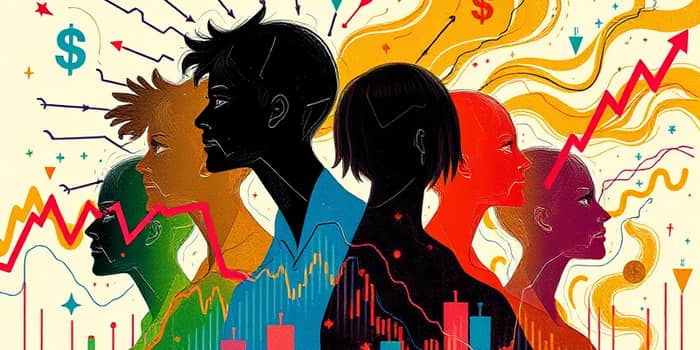
In an age of high-speed trading and algorithmic strategies, the human element remains a powerful force in financial markets. Understanding the psychological drivers behind investment decisions can mean the difference between long-term success and destructive errors.
Behavioral economics bridges the gap between cold, rational models and the messy reality of human emotion. This article explores theory, biases, real-world episodes, and proven frameworks to guide investors toward more disciplined decision-making.
Behavioral economics combines insights from psychology and economics to study how psychological factors influence financial choices. It highlights why markets often deviate from classical predictions of perfect rationality.
Instead of assuming investors always act in their best interests, behavioral economics asks: what drives people to make irrational decisions against their own welfare? By exploring patterns like panic selling, bubble formation, and herd behavior, this field uncovers persistent market inefficiencies.
Classical finance rests on assumptions like the Efficient Market Hypothesis (EMH), perfect information, and utility-maximizing actors. However, decades of research and historical crises have exposed the shortcomings of these ideals.
From the dot-com boom to the 2008 crash, real markets have shown that fear and greed override logic, contradicting EMH’s assumption of systematic mistakes.
Investors confront a host of cognitive biases that skew judgment and lead to suboptimal outcomes. Recognizing these pitfalls is the first step to mitigating their effects.
Additional triggers include mental shortcuts—or heuristics—like recency bias, where recent performance overshadows long-term trends, and FOMO, driving purchases purely based on others’ actions.
History offers vivid illustrations of these biases in action:
These events underscore that even seasoned professionals can fall prey to collective irrationality.
Leading firms have developed structured approaches to harness behavioral insights and protect investors from their own biases.
One prominent model is Vanguard’s ACE framework, which emphasizes:
By focusing on goals, diversification, cost minimization, and maintaining a long-term perspective, investors can counteract impulsive reactions to market swings.
Translating principles into practice involves simple yet powerful tactics:
These methods can reduce trading frequency, lower costs, and boost overall returns by preventing panic-driven mistakes.
Understanding behavioral dynamics yields measurable benefits:
Research suggests that mitigating overconfidence and loss aversion can boost performance by over 2% per year—compounding into substantial wealth gains over decades.
Advances in data analytics and machine learning are enabling platforms to detect collective behavioral patterns and suggest countermeasures in real time. Yet these tools must be designed ethically to avoid exploiting vulnerabilities.
Investors and advisors alike must continue integrating Nobel Prize-winning research into strategies, ensuring that decisions rest on evidence rather than emotion. The core lessons are clear:
By embracing behavioral economics, investors position themselves not only to avoid common pitfalls but to capture opportunities that arise when others succumb to irrationality.
References













